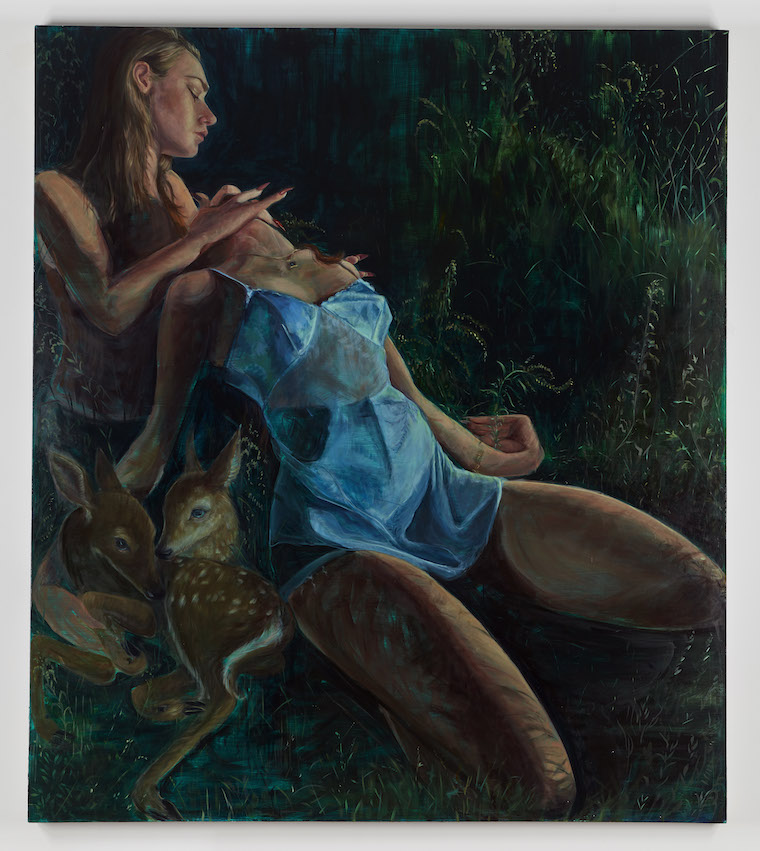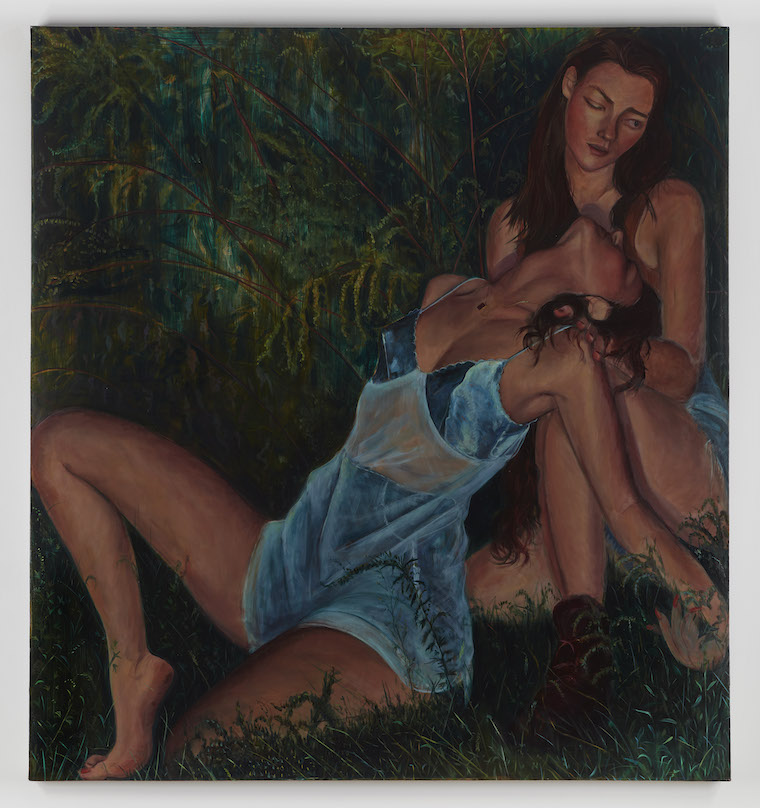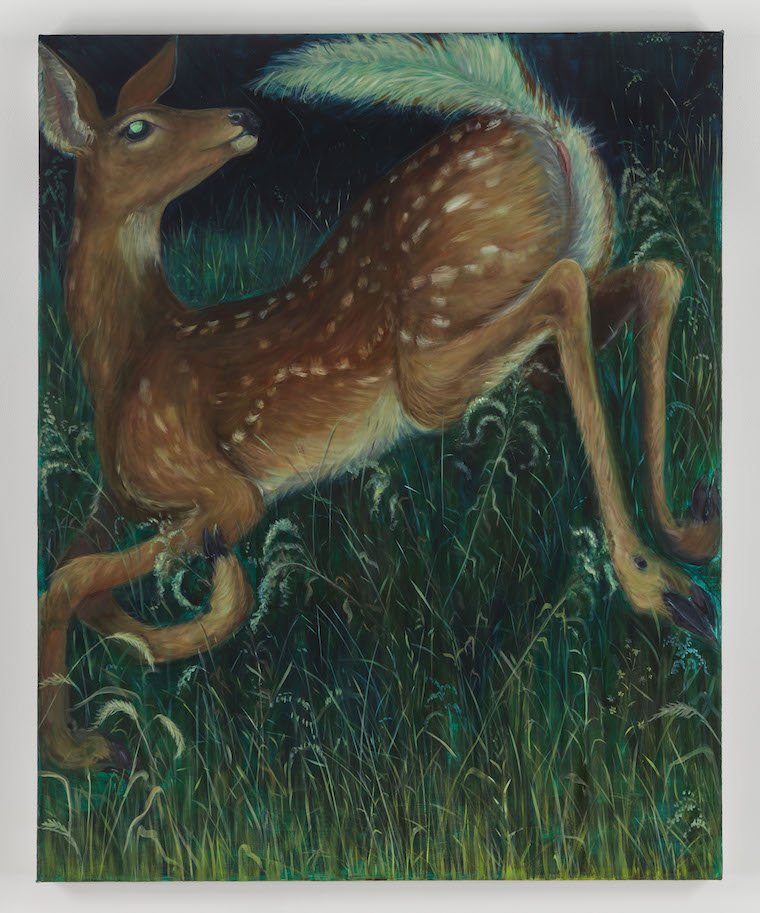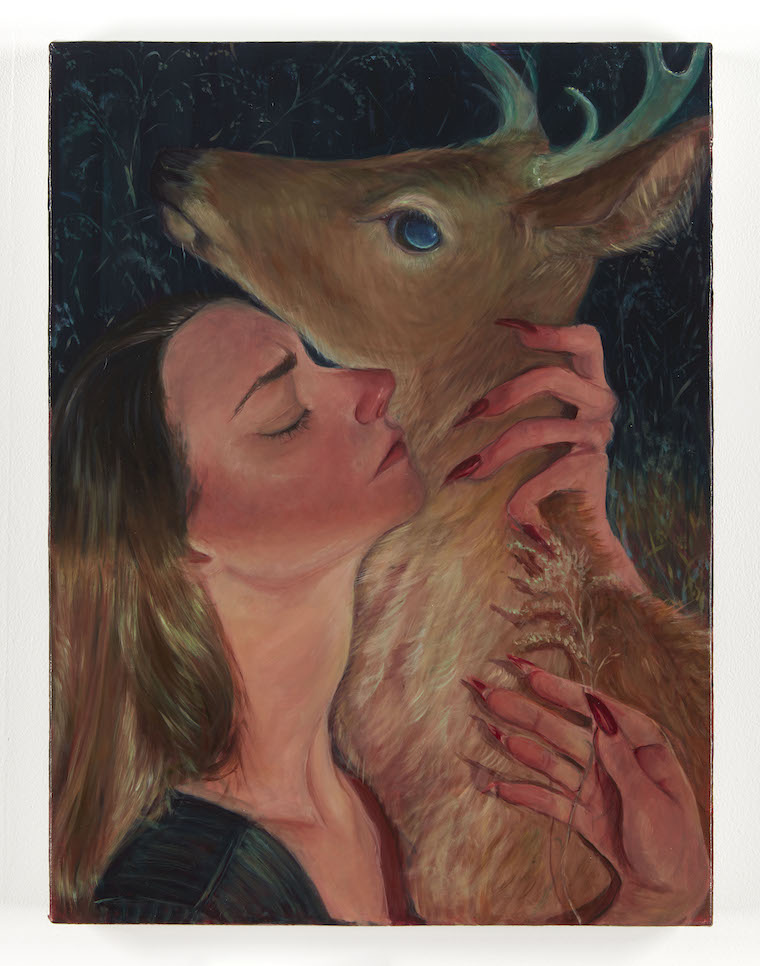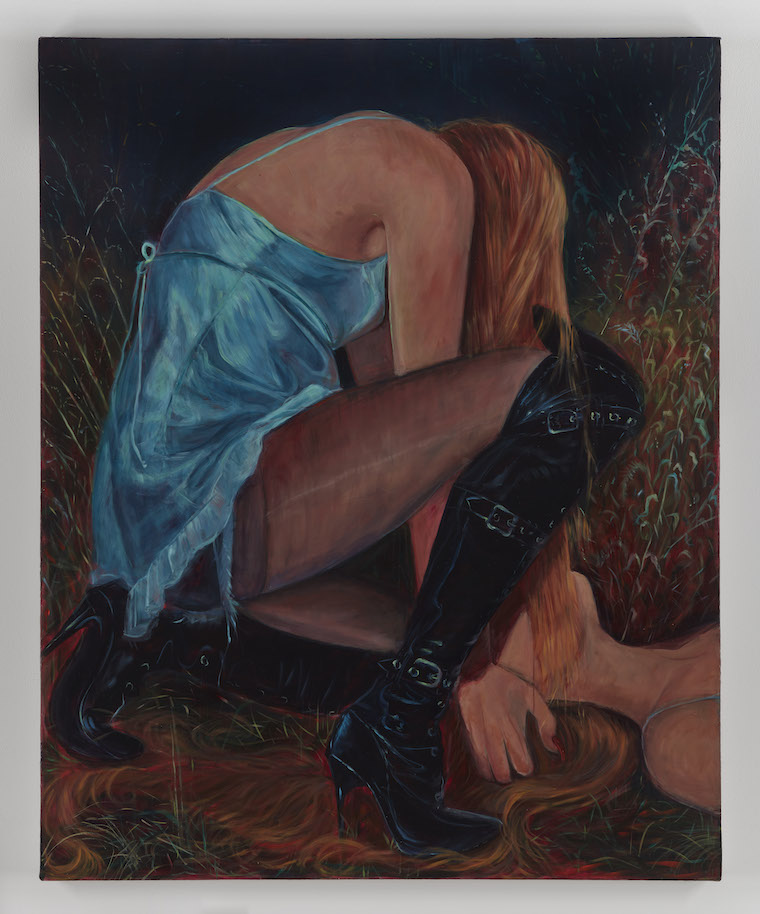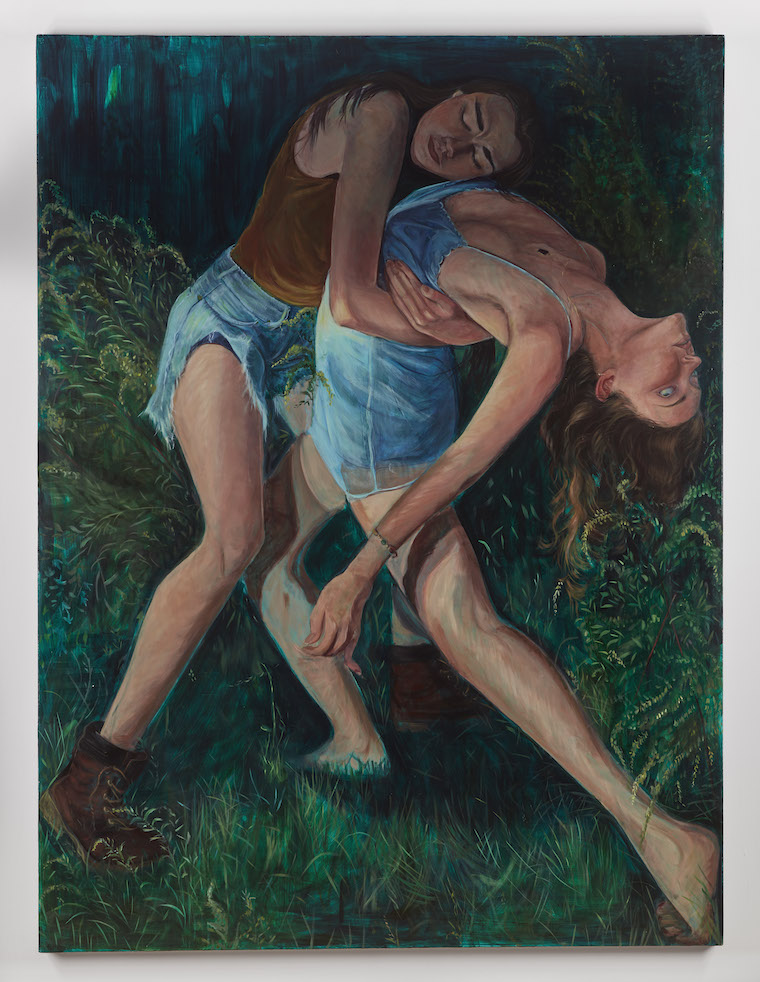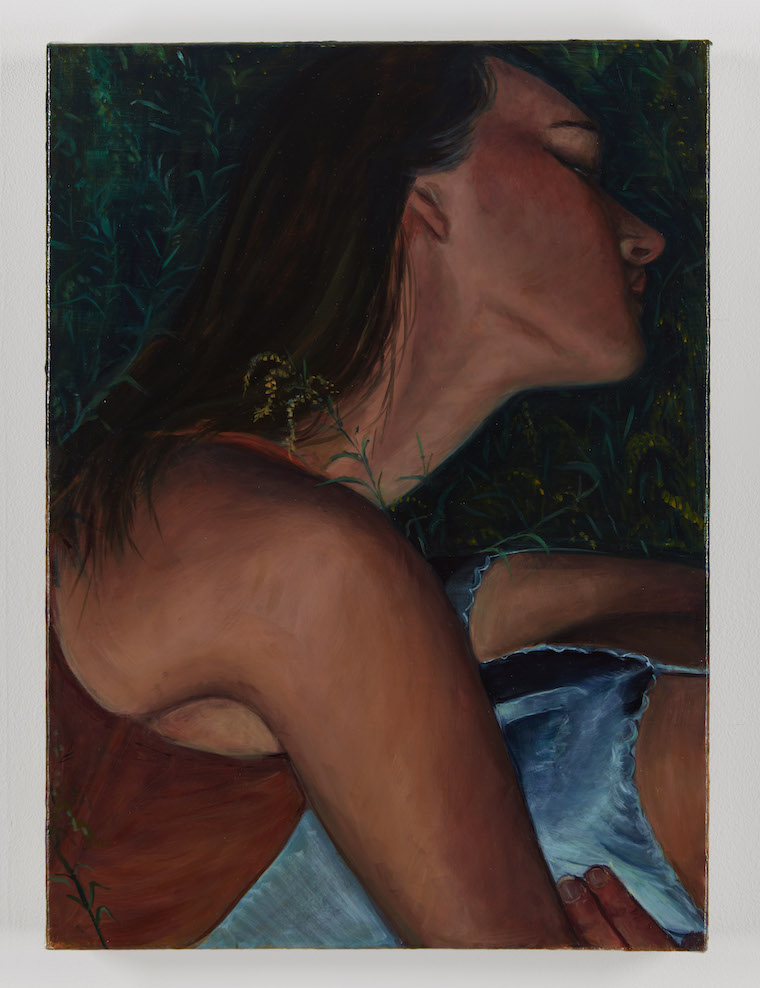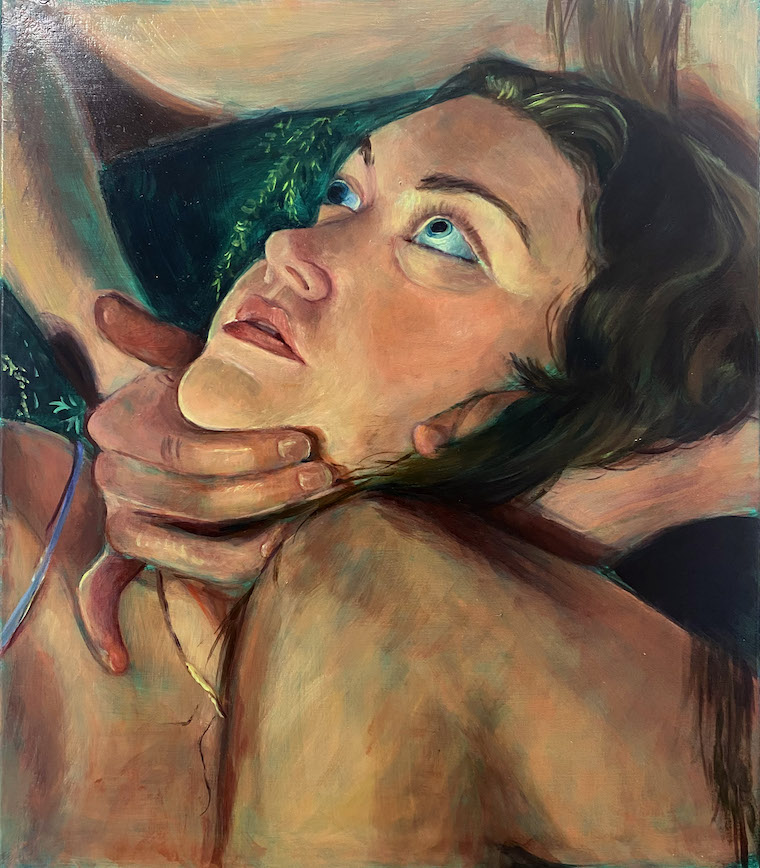I always thought Caravaggio’s The Taking of Christ had a film noir quality to it. Judas IDi-ng Jesus while the Roman guards stand ready to arrest him felt like a disciple turned state’s evidence as the son of God took his perp walk. The glint, the shimmer on the soldier’s armor read as divine light minus whatever benevolent association we make with anything adjective-d as “divine.” And the kiss from Judas is akin to a mob guy bestowing upon his former friend the marked man’s farewell.
Since graduating Yale’s MFA program in 2022, Samantha Joy Groff has quickly built a following around her hauntingly seductive portraits of Mennonite women. “Dark Pastures” largely shifts away from this subject matter—the religious garb —while maintaining the intrigue and coyness of her earlier work. Hair coverings be gone. Longing remains.
The thru line here, apart from the setting which still resembles the rural Pennsylvania of her youth, is an unspoken disturbance in the atmosphere, a desperate clutching for connectivity whose intensity at times smothers. And the animals like those in the paintings of Carroll Dunham bear witness to the foibles and yearnings of their human counterparts.
In an essay about the late Paul Thek, historian Robert Storr observes that “the grotesque is the art of extravagant contradiction.” He expands to go into the polarities of refinement versus vulgarity, the decorative versus the distasteful , horror and humor. Groff undeniably taps into these same slipstreams: a potential duality of misreads. —Bill Powers, Founder, Half Gallery

